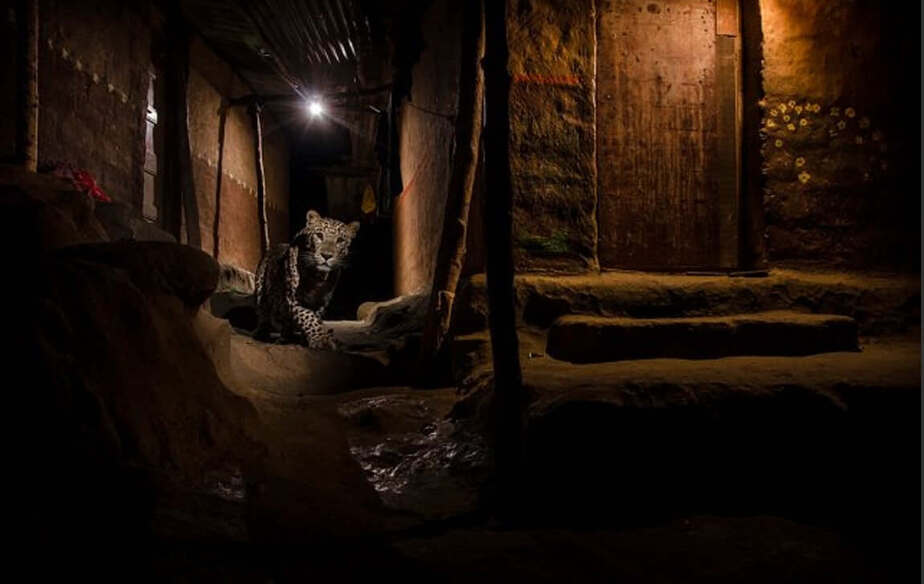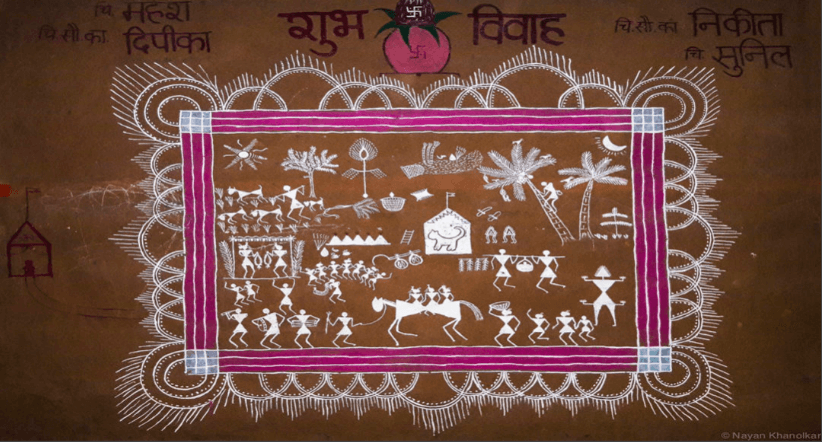Written by Stuti Pachisia
Mumbai is a city of dichotomies: on one hand, it invites thousands of migrants to indulge in its rapid urbanization by virtue of its cultural symbolism, dubbed as the ‘Maximum City’. On the other hand, this brand of adamant development bulldozes those who do not wish to participate in the same. As a result, those spaces which remain relatively unblemished by urban development projects are scarce. One such ‘safe space’ is Aarey Milk Colony.
Set in suburban Mumbai, Aarey Milk Colony is a green cover of over 4,84,000 trees. As it lies on the outskirts of Sanjay Gandhi National Park, a lot of Aarey Milk Colony is a thickset forest with sprawling wildlife, trees and Adivasi settlements (mostly the Warli tribe).
The ‘Milk Colony’ portion in Aarey presents the paradoxical nature of its composition
Aarey, a 3500-acre forested area, became a party to the urban development project of Mumbai when Aarey Milk Colony was set up in 1949 by the Dairy Development Department of Maharashtra. Slowly, the untouched forested land began giving way to signifiers of urban development.
As the Hindustan Times noted, Aarey has witnessed several urban development projects: the construction of a police training area, film production and teaching centres, cemeteries and a public housing complex and a proposed zoo. Approximately, a third of Aarey is now under other government agencies. They note that “the draft development plan 2034 for Mumbai has more ambitious ideas for the area, including a business centre.”
Perhaps the paradox is sealed when one considers how Aarey acquired national notoriety in 2016: Nayan Khanolkar, a Mumbai-based photographer, won the BBC Wildlife Photographer of the Year Award (Urban Category) based on the image he caught of a leopard slinking through housing settlements in Aarey.
 Photo Courtesy: Nayan Khanolkar
Photo Courtesy: Nayan Khanolkar
The Warli Tribe’s Predicament
The rapid urbanization of Aarey is a source of human-animal conflict and poses an obvious threat to the wildlife in the area. However, one other community that stands to be decimated by the loss of the forest is the Warli tribe.

Warli art often portrays a peaceful coexistence between animals and humans: a situation that is highly fraught in Aarey. Photo Courtesy: Nayan Khanolkar
As Scroll.in notes, “about 10000 Warlis spread over 27 padas, or settlements, live in Aarey”. The Adivasis have lived in Aarey for centuries and have nurtured a peaceful coexistence with the forest. The leopards which have threatened the urban population in Aarey are worshipped by the Warlis and other tribes living in the area. Insofar, the tribe reveres and depends on the forests of Aarey for their sustenance. However, their livelihood and lifestyle stand hugely threatened because of the construction of the car depot for the SEEPZ underground metro line.
The 33.5-km-long Colaba-Bandra-SEEPZ Mumbai Metro III is a centrepiece of the Devendra Fadnavis government. The line ─ which would improve the connectivity of a large part of the city ─ faced major opposition from political parties and environmentalists because of the loss of green cover that it implied in Aarey. Ashwini Bhide, the Managing Director of Mumbai Metro Rail Corporation Limited (MMRC) defended the need for the metro construction by saying that “whatever road projects we implement, [in] a growing city like Mumbai, which is a nerve centre of financial activity, they are not going to be adequate … There is no alternative to a metro-like mass transit project.”
Yet, the mass transit project seems to ignore its impact on the masses. Activists and Warlis argued that the construction of a double-decker car shed in a forest area instead of barren or industrial land was an unjustifiable move. An expert committee that surveyed several locations suggested alternative land at Kanjurmarg, which was shot down by the MMRD.
In fact, in June 2017, the Maharashtra Forest Minister, Sudhir Mungantiwar demanded evidence that Aarey was a forest. An NGO named Vanashakti acquired an official communication dated October 10, 1980, from the Thane regional office of the Forest Development Corporation of Maharashtra Limited (FDCM) to the Managing Director of FDCM, that stated, “Considering the fact that the recreation sector [575 hectares] is burdened with number of rights and privileges, it will be better if the whole area is declared as protected forests under Indian Forests Act, 1927.”
In retaliation, K.D. Thakare, the Deputy Conservator of Forests, (territorial) Thane, said that Aarey cannot be termed a forest as there are a number of dairies and hospitals there.
“If it was a virgin land, with just forest and nothing else, then it was different. But it is not so in this case.”
Apart from denying that the ‘green lung’ of Mumbai is a forest by using urban development as an excuse for the same, Stalin Dayanand makes note of why the MMRC and the government could be so insistent on not labelling Aarey as a forest: “The denial of Aarey as a forest has to do with the land occupied by the Adivasis. There has been political pressure from the developers to open up Aarey for Slum Rehabilitation Schemes, and they are trying to pass of the forest dwellers as slum dwellers, treating them as encroachers, and trying to put them in 250 feet tenements.”
On 20th June of 2000, tribals came together to protest the construction of the car shed. Then, on 14th August, tribal populations of Aarey and environmental activists began the Aarey Chhodo Andolan (leave Aarey protest) march, moving from the Marol police station to the Aarey picnic spot, opposing the reservation of land for the Metro car shed.
One Adivasi, Prakash Bhoir, says, “My son has been bitten by a snake here, five times, yet we do not want to leave. There are leopards here, we worship them as our God. He is like a family member to us … They cut down enormous trees, raze jungles, dig holes, and build buildings here. But I have never heard of a building being broken down to build a forest there. This should also happen, right? This is also part of development.”
For the Adivasis, it is an ongoing struggle to prove that they are the “moolnivasi” or the original inhabitants of a space that is rendered fragile because of the incursions of urban development. For the Warlis, Aarey is their home, tied to their everyday existence. In fact, Warli art often shows peaceful coexistence between animals and humans: a situation that is highly fraught in Aarey. Bhoir is right when he goes on to say, “Only if the jungles remain, will the Adivasis remain, and only if the Adivasis remain, will the jungles remain.”
Featured image courtesy Nayan Khanolkar





